Sonus Paradisi
Brasov, 1839 [Hauptwerk]
Brasov, 1839 [Hauptwerk]
Couldn't load pickup availability
Brasov - Black Church Organ, Buchholz, 1836-1839
The instrument is the largest preserved organ by Carl August Buchholz (1796 - 1884), the prolific Berlin organbuilder. It consists of four manual console with 63 sounding stops. The Black church (Biserica neagra, Schwarze Kirche) is a Lutheran church in the heart of the Transylvania (today Romania). The importance of the instrument is underlined by frequent concerts: from spring to autumn, there are three organ concerts every week.
The type of the instrument is sometimes called "in between the times". It has clear marks of the Romantic sound; yet it is still rooted in the baroque organ design with its "Werkprinzip" and pyramidal structure (foundational stops, aliquotes, mixtures). The core of this organ is the Joachim Wagner organ from the Marienkirche in Berlin, organ which Buchholz repaired in 1829. The purely mechanical action operates the traditional slider chests, requiring a good amount of force to play the keyboards.
The organ was built in 1839 in the early Romantic style. It was preserved without major changes until present. During the latest restoration by Ferdinand Stemmer, all the changes were puristically undone to restore the primordial state, because the original pipes were mostly available. Hence, the instrument is now in the shape as it came out of the hands of Buchholz. It is definitely the best preserved Buchholz organ ever.
Presented to you by Leonart Studio, your authorised reseller for Sonus Paradisi in Switzerland (shipped internationally). Get your digitally sampled historical organs for the use with the Hauptwerk virtual instrument software.
Share this Sample Set
![Brasov, 1839 [Hauptwerk]](http://artful.shop/cdn/shop/files/ss_brasov1.jpg?v=1692967057&width=1445)
![Brasov, 1839 [Hauptwerk]](http://artful.shop/cdn/shop/files/ss_brasov2.jpg?v=1692967055&width=1445)
![Brasov, 1839 [Hauptwerk]](http://artful.shop/cdn/shop/files/ss_brasov3.jpg?v=1692967056&width=1445)
![Brasov, 1839 [Hauptwerk]](http://artful.shop/cdn/shop/files/ss_brasov4.jpg?v=1692967056&width=1445)
![Brasov, 1839 [Hauptwerk]](http://artful.shop/cdn/shop/files/ss_brasov5.jpg?v=1692967056&width=1445)
![Brasov, 1839 [Hauptwerk]](http://artful.shop/cdn/shop/files/ss_brasov11_65eb487f-30a1-489b-b300-aca6a0bccdff.jpg?v=1692967054&width=1445)
Specification (stop list)
-
Manual I
Unterwerk (enclosed)
Salicional 16′
Principal 8′
Viola da Gamba 8′
Gedact 8′
Flauto traverso 8′
Octava 4′
Flauto dolce 4′
Viole d'amour 4′
Gemshorn 2 2/3′
Decima quinta 2′
Progressio harmonica III–V -
Manual II
Rohrwerk (enclosed)
Rohrflöte 8′
Violino 8′
Principal 4′
Fagott 16′
Trompete 8′
Clarinetto 8′
Vox angelica 8′ -
Manual III
Hauptmanual
Principal 16′
Quintatön 16′
Principal 8′
Gemshorn 8′
Viola da Gamba 8′
Rohrflöte 8′
Nasard 51/3′
Octava 4′
Spitzflöte 4′
Waldflöte 4′
Quinta 22/3′
Superoctav 2′
Scharf V
Cimbel III
Cornett V (from g) -
Manual IV
Oberwerk
Bourdon 16′
Principal 8′
Salicional 8′
Hohlflöte 8′
Gedact 8′
Quintatön 8′
Octava 4′
Rohrflöte 4′
Fugara 4′
Nasard 2 2/3′
Superoctava 2′
Mixtur V
Hautbois 8′ -
Pedal
Principal 32′
Untersatz 32′
Principal 16′
Violone 16′
Subbass 16′
Nasard 10 2/3′
Principal 8′
Gemshorn 8′
Violone 8′
Bassflöte 8′
Quinta 5 1/3′
Octava 4′
Mixtur V
Contra Posaune 32′
Posaune 16′
Trompete 8′
Cornetta 4′ -
Other specification
Accessories:
• Couplers: UW - RW, OW - HM, HM - RW, HM - Ped.
• Ventils for each division (two ventils for pedal)
• Expression pedal for Unterwerk
• Expression pedal for Rohrwerk
• Evacuant (to get bellows empty)
• Calcanten Glocke (bell to the calcant, in Hauptwerk this is a blower switch, it shoudl remain on!)"
History
Brasov - Black Church Organ, Buchholz, 1836-1839
Brasov organThe instrument is the largest preserved organ by Carl August Buchholz (1796 - 1884), the prolific Berlin organbuilder. It consists of four manual console with 63 sounding stops. The Black church (Biserica neagra, Schwarze Kirche) is a Lutheran church in the heart of the Transylvania (today Romania). Transylvania had German colonists since the 12th century, there is an uninterrupted German Lutheran tradition since the outset of Lutheranism in Europe. Brasov is the centre of this ecclesiastical body. The church is known for its unique collection of historical Turkish carpets which hang all over the walls and everywhere - and they also undoubtedly contribute to the acoustical condition of the Gothic building. The organ is the largest mechanical instrument of Romania. The importance of the instrument is underlined by frequent concerts: from spring to autumn, there are three organ concerts every week.
The type of the instrument is sometimes called "in between the times". It has clear marks of the Romantic sound: domination of 8 feet stops, poly-choric design of divisions, fully developed choruses (flutes, strings, principals, reeds) in every division, strong dynamic contrasts between divisions. Yet, it is still rooted in the baroque organ design with its "Werkprinzip" and pyramidal structure (foundational stops, aliquotes, mixtures). The core of this organ is the Joachim Wagner organ from the Marienkirche in Berlin, organ which Buchholz repaired in 1829. The purely mechanical action operates the traditional slider chests, requiring a good amount of force to play the keyboards.
The organ is physically designed in three floors: the base is occupied by the pedal with the tallest pipes on the very sides of the organ case. The Oberwerk is seated in the floor above in the front, resulting in a direct and present sound. The Unterwerk is behind, enclosed, and it has the characteristics of a true echo division. The upper floor belongs to the Hauptmanual (front) and Rohrwerk (back, enclosed), allowing for somewhat distant, as if mystical, sound from the above. The colors of the stops blend together perfectly, delivering really smooth crescendo where no stop (not even the loudest ones) stands out of the dark and heavy tutti.
The organ was built in 1839 in the early Romantic style. It was preserved without major changes until present. There was a minor renovation in 1966 when several stops were changed:
Hauptmanual Cornett 16 to Cornett 8
Unterwerk Flauto traverso 8 to an Octavlein 1, Progressio Harmonica set to a higher pitch
Pedal Nasard 10 2/3 changed to Octave 2 and Mixtur reinforced by one rank.
The purpose of these changes is clear: to give somewhat brighter detail to the instrument, following the neo-baroque fashion.
During the latest restoration by Ferdinand Stemmer, all the changes were puristically undone to restore the primordial state, because the original pipes were mostly available. Hence, the insrument is now in the shape as it came out of the hands of Buchholz. It is definitely the best preserved Buchholz organ ever.
Special thanks to Mr. Steffen Schlandt, the titular organist of the Black church, for his warm welcome in Brasov, for precious information about the history of the instrument and for the fine photos of the instrument supplied for this web page.
Features
Encryption
The samples are offered in 48kHz/24bit resolution. The multiple releases have three levels: short, mid and long. Hauptwerk v.4.2 and higher required. The sample set is open format, no encryption.
Surround format
The sample set is offered in the Surround variant (6 channels). In addition to the usual 4-channel surround, there are two more alternative front channels. In total, there are 4 front audio channels and 2 rear channels. The two pairs of the front ranks feature two different recording positions: direct (near to the pipes) and diffuse (distant from the instrument). These two pairs of the front ranks can either be mixed together freely to achieve any listening position between the two extremes, or used separately - depending on the prefererences of the user. A dedicated "mixing desk" is available in Hauptwerk to mix the sound to the desired level. See the illustration.
A beta tester commented: The mixer setting 64 is the default listening position, making a good balance between the direct and diffuse sound. Settings below about 40 start to get too direct for my ear, but I like setting 64, and again 100, with the rear channels at 80. It is nice to be able to go just about anywhere in the building to place my ears.
Normally, the direct and the diffuse ranks would be both routed into the same audio output (usually called the "Main output" in Hauptwerk), while the rear ranks would normally be routed into the rear audio channel. Obviously, it is also possible to disable either the direct ranks or the diffuse ranks, achieveing a traditional 4 channel surround, depending on the preferences of the user.
The demo pieces presented on the demo tab show various settings of the mixing desk of the Brasov Surround Sample Set.
Reverb time
The reverb time is ca. 5 seconds.
Keyboards, pedalboard
The original compass of the keyboards is 56 keys. The original compass of the pedal division is 27 sounding tones (extended to 30 tones in Hauptwerk).
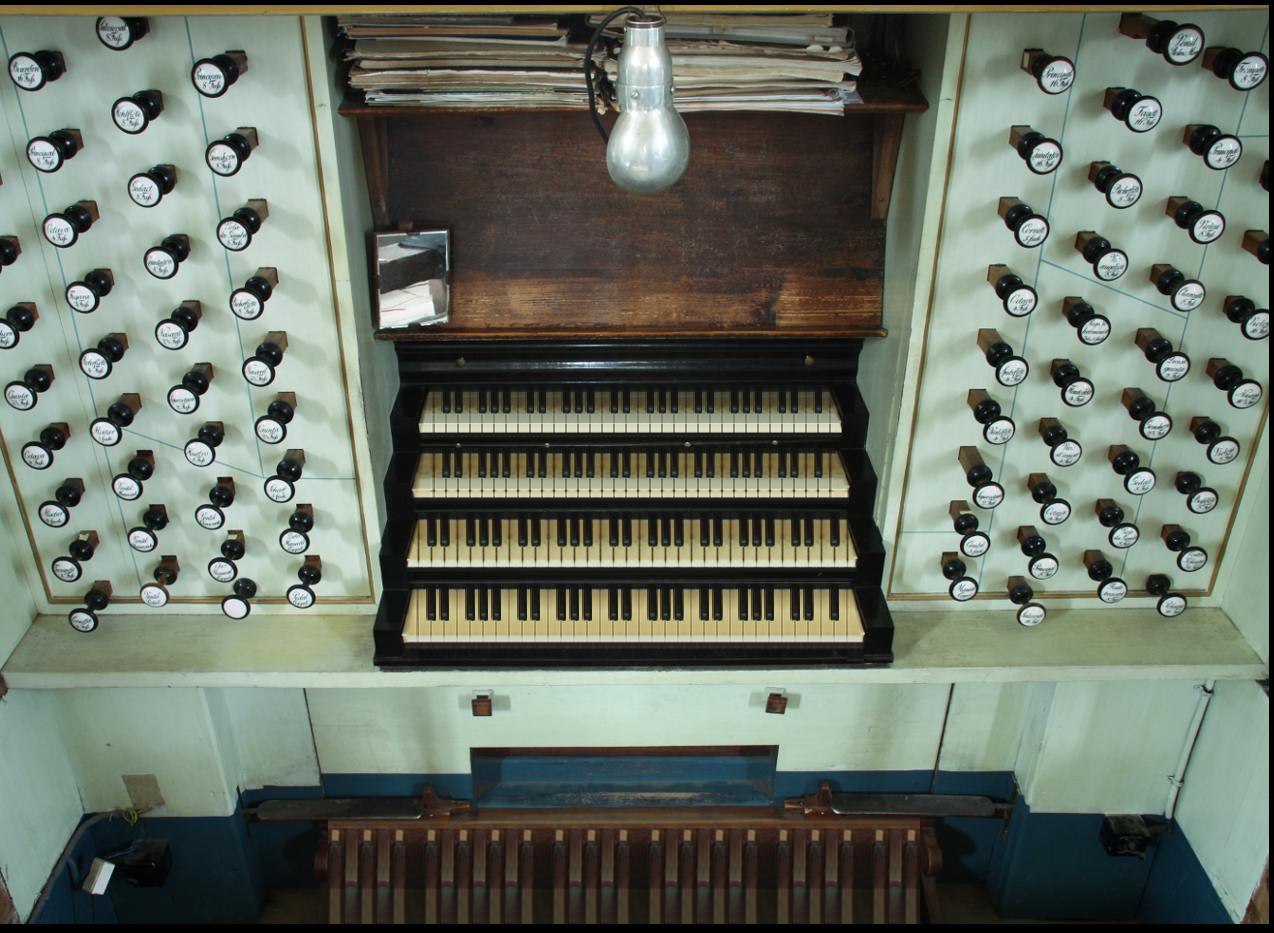


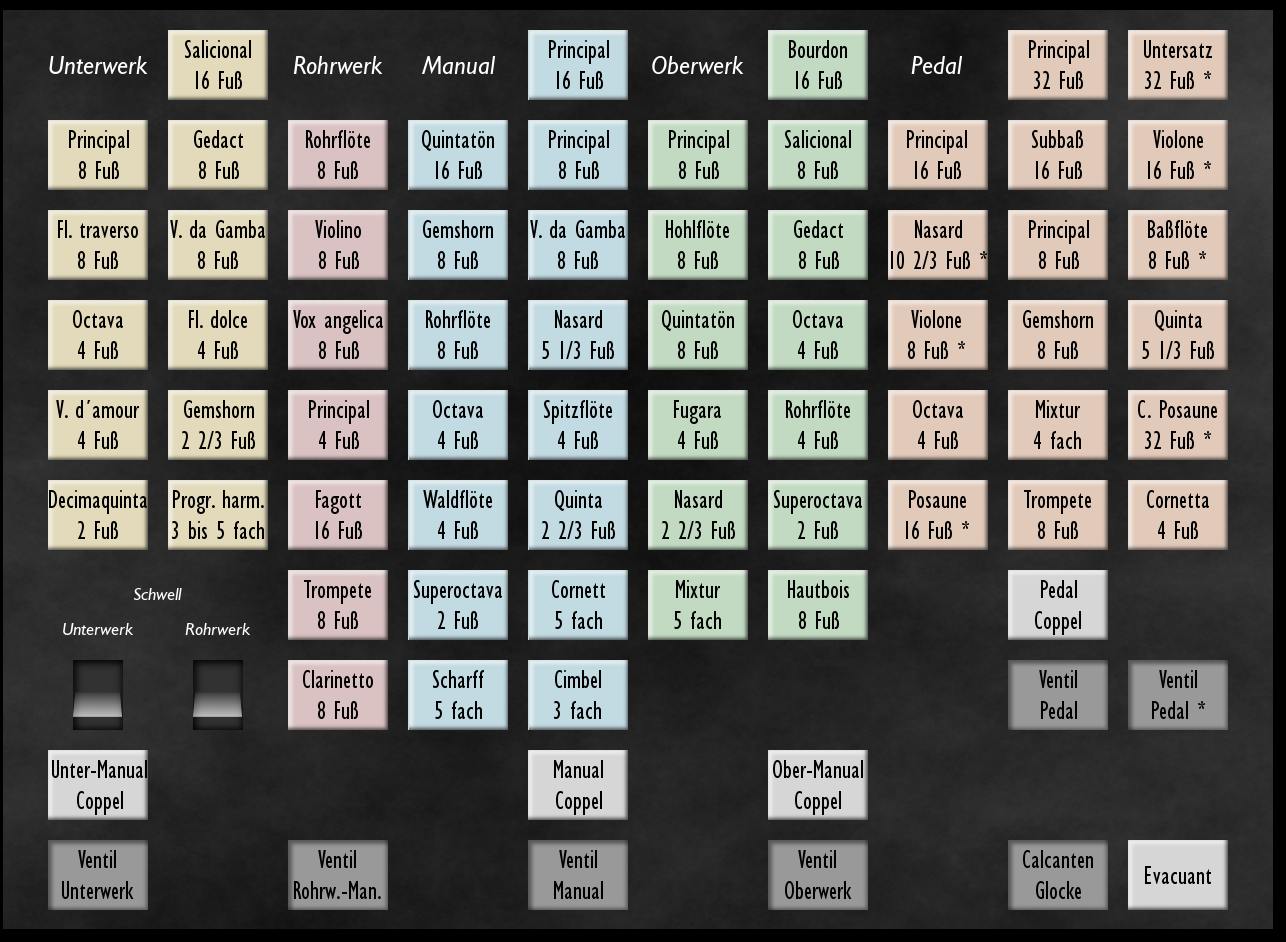
Requirements
Hauptwerk v.4.2 and higher required. The sample set is open format, no encryption.
RAM consumption (2-channel stereo, conventional "wet" sample set, using only the diffuse samples loaded, the rest muted)
16-bit, other settings default: 6.8 GB
20-bit, other settings default: 11.7 GB (recommended)
24-bit, other settings default: 12.6 GB
RAM consumption (6-channel surround)
16-bit, other settings default: 17.9 GB
20-bit, other settings default: 32.2 GB (recommended)
24-bit, other settings default: 34.7 GB
Screen resolution 1280x1024 px or more.
Polyphony of 6000 voices recommended for the full suround. 4000 simultaneous pipes recommended for use of the wet (front ranks only) portion of the sample set.
This Hauptwerk Sample Set is presented to you by Leonart Studio, an authorised reseller for the manufacturer Sonus Paradisi in Switzerland (shipping internationally). Enjoy this digitally sampled organ library for the use with Hauptwerk software and start expanding your historical organ collection today.
More Hauptwerk Sample Sets
-
Schwerin, Dom, Ladegast Organ 1871 [Hauptwerk]
Vendor:Sonus ParadisiRegular price CHF 616.00Regular priceUnit price / per -
Segovia, 1772 [Hauptwerk]
Vendor:Sonus ParadisiRegular price CHF 317.90Regular priceUnit price / per -
Groningen, 1450-1740 [Hauptwerk]
Vendor:Sonus ParadisiRegular price From CHF 658.90Regular priceUnit price / perCHF 1,681.90Sale price From CHF 658.90Sale -
St. Maximin, 1775 [Hauptwerk]
Vendor:Sonus ParadisiRegular price CHF 440.00Regular priceUnit price / per -
Reuter, 1928 [Hauptwerk]
Vendor:Sonus ParadisiRegular price CHF 473.00Regular priceUnit price / per -
Casavant, 1995 [Hauptwerk]
Vendor:Sonus ParadisiRegular price CHF 174.90Regular priceUnit price / per -
Rotterdam Hoofdorgel, 1973 [Hauptwerk]
Vendor:Sonus ParadisiRegular price From CHF 330.00Regular priceUnit price / perCHF 958.10Sale price From CHF 330.00Sale -
Piacenza, 1838 [Hauptwerk]
Vendor:Sonus ParadisiRegular price CHF 330.00Regular priceUnit price / per -
Bückeburg, 1997 [Hauptwerk]
Vendor:Sonus ParadisiRegular price From CHF 1.10Regular priceUnit price / per -
Lüdingworth, 1683 [Hauptwerk]
Vendor:Sonus ParadisiRegular price CHF 330.00Regular priceUnit price / per

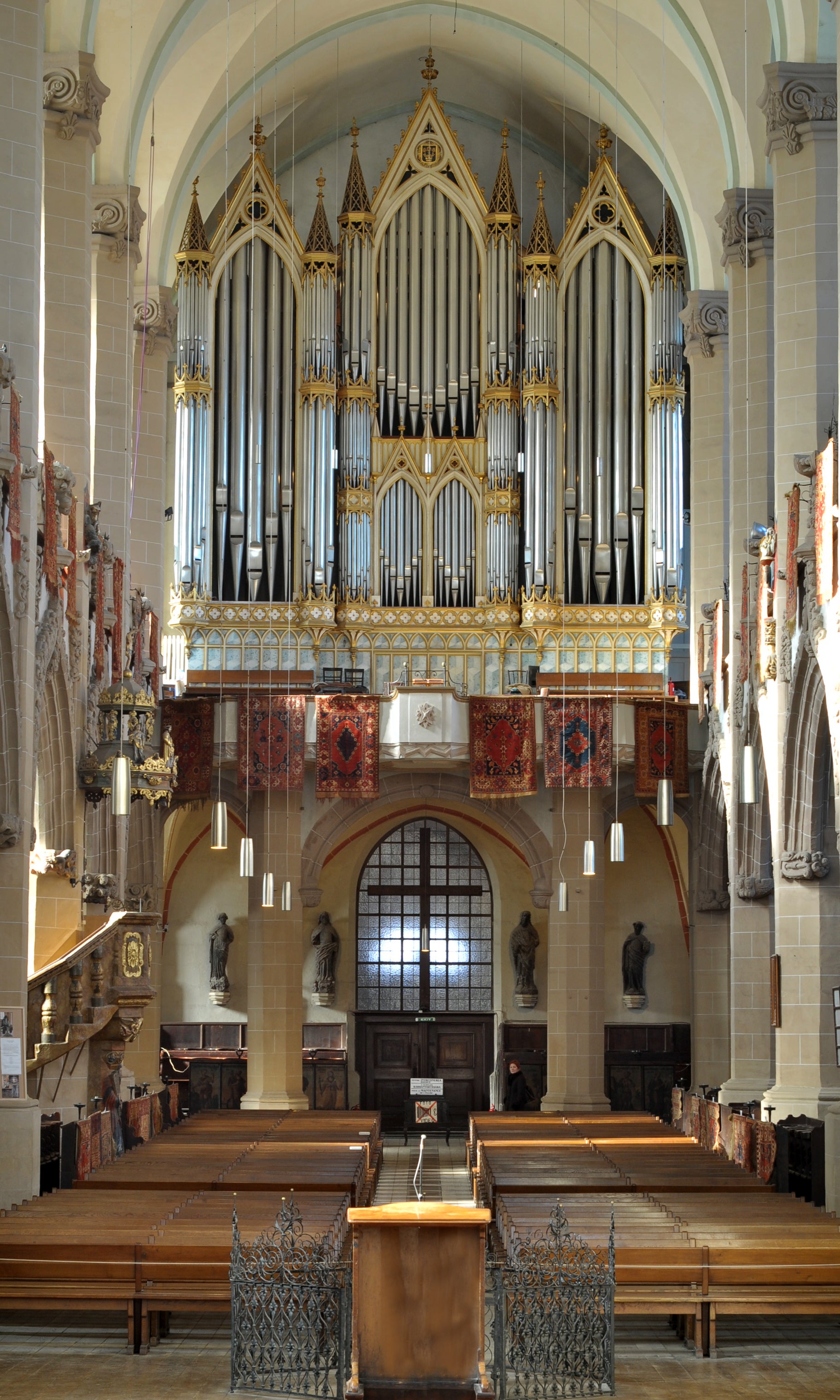



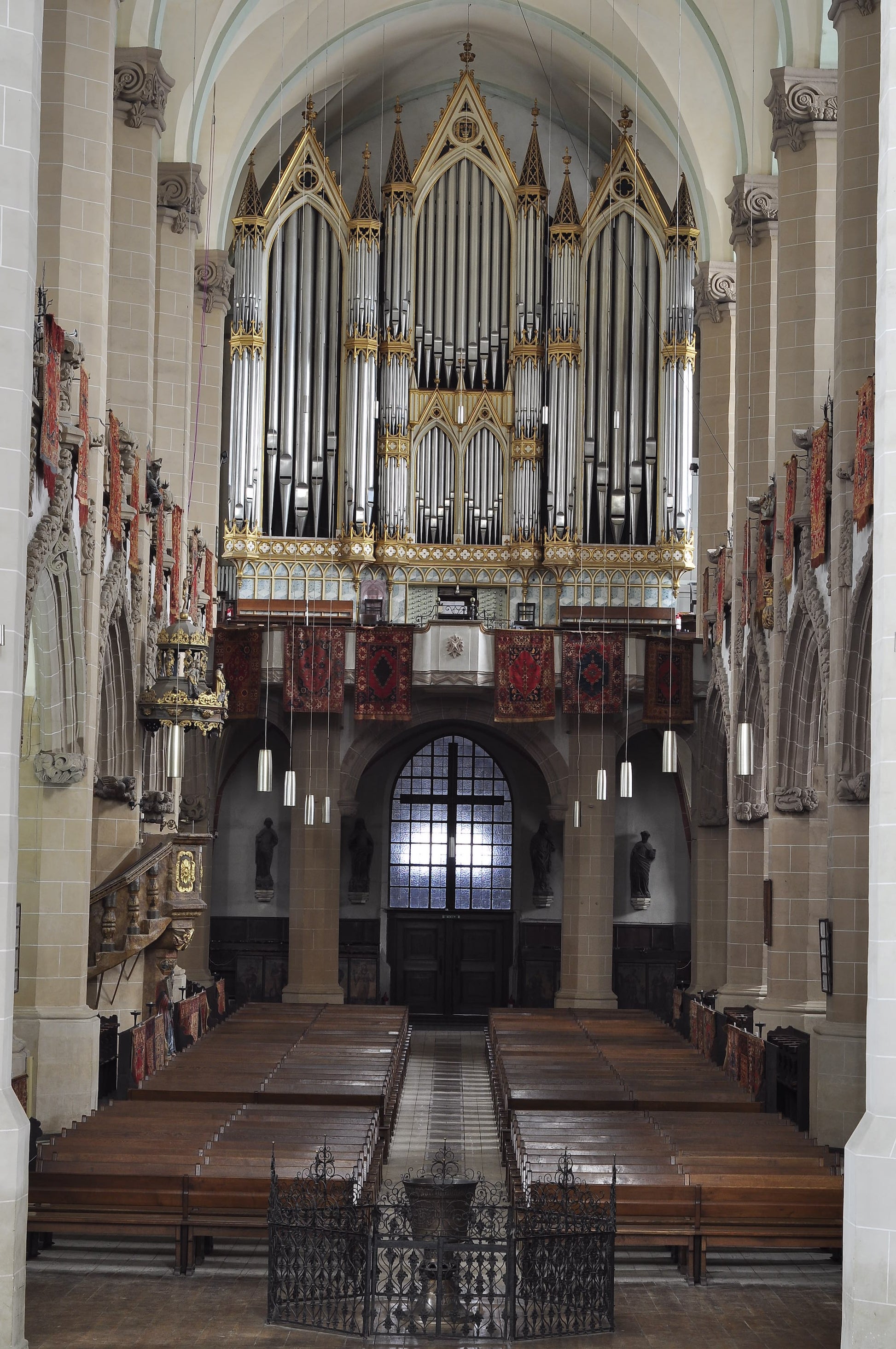
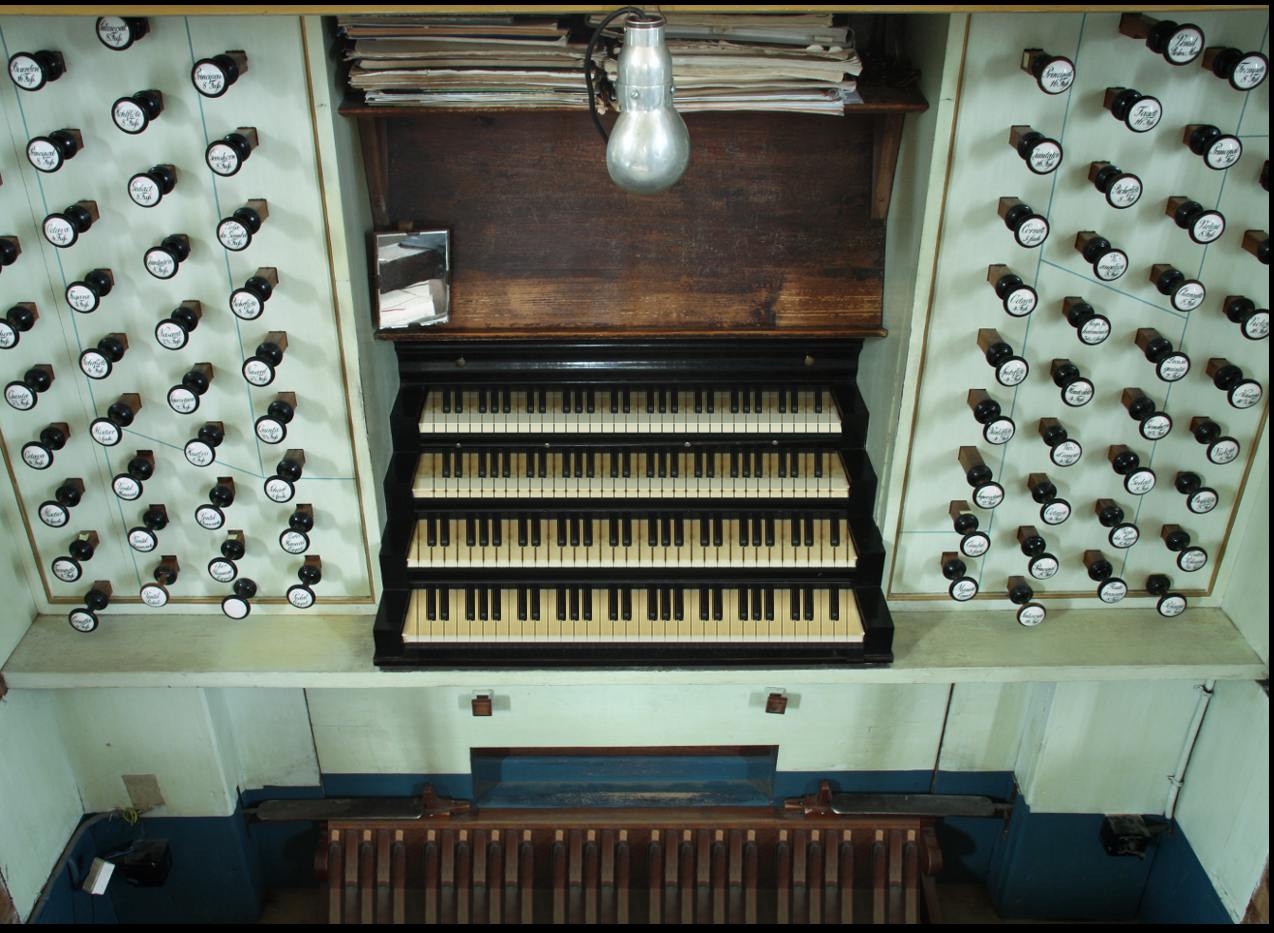
![Schwerin, Dom, Ladegast Organ 1871 [Hauptwerk]](http://artful.shop/cdn/shop/files/ladegast1.jpg?v=1759140126&width=533)
![Segovia, 1772 [Hauptwerk]](http://artful.shop/cdn/shop/files/ss_segovia1.jpg?v=1714213906&width=533)
![Groningen, 1450-1740 [Hauptwerk]](http://artful.shop/cdn/shop/files/ss_Groningen1.jpg?v=1693275425&width=533)
![St. Maximin, 1775 [Hauptwerk]](http://artful.shop/cdn/shop/files/ss_maximin1.jpg?v=1692902597&width=533)
![Reuter, 1928 [Hauptwerk]](http://artful.shop/cdn/shop/files/ss_Reuter1.jpg?v=1693321024&width=533)
![Casavant, 1995 [Hauptwerk]](http://artful.shop/cdn/shop/files/ss_casavant1.jpg?v=1693319885&width=533)
![Rotterdam Hoofdorgel, 1973 [Hauptwerk]](http://artful.shop/cdn/shop/files/ss_RotterdamMain1.jpg?v=1693279529&width=533)
![Piacenza, 1838 [Hauptwerk]](http://artful.shop/cdn/shop/files/ss_piacenza1.jpg?v=1693003521&width=533)
![Bückeburg, 1997 [Hauptwerk]](http://artful.shop/cdn/shop/files/ss_bueckeburg1.jpg?v=1692967628&width=533)
![Lüdingworth, 1683 [Hauptwerk]](http://artful.shop/cdn/shop/files/ss_luedingworth1.jpg?v=1692998051&width=533)